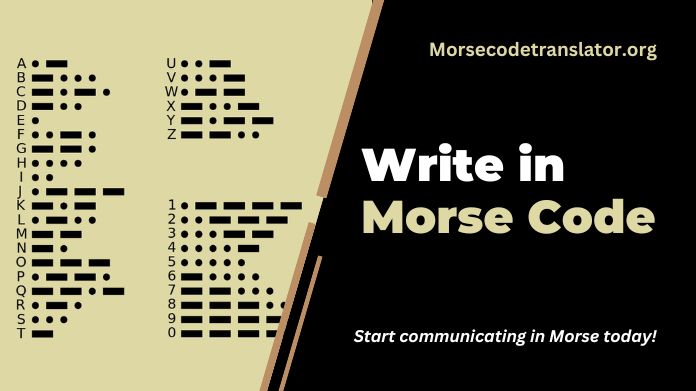Writing in Morse code can be a fascinating and practical skill to acquire, whether for communication, encryption, or to enjoy learning something new. Write in Morse code, with its distinctive combination of dots and dashes, has a rich history dating back to the early days of telecommunication.
In this digital age, mastering Morse code can provide a unique and creative way to communicate messages, especially in situations where traditional methods may not be available or practical.
Learning how to write in Morse code doesn’t have to be daunting. With the right resources and techniques, anyone can quickly grasp the fundamentals and craft encoded messages.
From understanding the principles of Morse code to practicing writing out messages, this guide will explore easy and accessible methods to help you become proficient in this timeless communication system.
So, whether you’re a beginner looking to delve into write in Morse code or someone seeking to sharpen their skills, let’s embark on this journey together and unlock the secrets of Morse code writing.
What is Morse Code?
Morse code transmits text information as a series of on-off tones, lights, or clicks. It uses a standardized sequence of short and long elements, known as “dots” and “dashes” or “dits” and “dahs,” to represent letters, numerals, punctuation, and special characters of a message.
Developed by Samuel Morse and Alfred Vail in the early 1830s for telegraphy, Morse code became widely used for long-distance communication over telegraph and radio systems. Each character is encoded as a unique sequence of dots and dashes, with shorter signals representing more frequent letters and longer signals representing less common letters.
Despite technological advancements, Morse code remains relevant today, used in various applications such as aviation, amateur radio, emergency communication, and even as a hobby for enthusiasts interested in cryptography and communication arts.
Easy Ways to Write in Morse Code

Writing in Morse code can be an enjoyable and practical skill to learn. Here are some easy ways to get started:
1. Learn the Morse Code Alphabet: Familiarize yourself with the Morse code symbols for letters, numbers, and common punctuation marks. You can find charts and guides online or in Morse code reference books.
2. Use Online Resources: Numerous online tools and apps can help you translate text into Morse code and vice versa. Type your message into the tool to generate the corresponding Morse code.
3. Practice Writing: Practice writing Morse code messages by hand using pen and paper. Start with short words and phrases, and gradually work to more complex sentences.
4. Create Flashcards: Make flashcards with the letters of the alphabet and their corresponding Morse code symbols. Practice flipping through the flashcards and writing each letter’s Morse code.
5. Encode Messages: Once you’re comfortable with the Morse code alphabet, try encoding messages for yourself and others to decode. You can write secret notes, send coded emails, or even communicate with friends and family in Morse code.
6. Experiment with Light and Sound: Morse code can also be transmitted using light signals (such as with a flashlight) or sound signals (such as with a buzzer or whistle). Using these methods, experiment with different ways of sending and receiving Morse code messages.
Remember, writing in Morse code takes practice and patience, like any skill. But with dedication and perseverance, you’ll soon become proficient in this timeless communication system.
Final Note
Learning to write in Morse code can be a rewarding and fun experience. By familiarizing yourself with the Morse code alphabet, practicing writing out messages by hand, and using online resources and tools, you can quickly become proficient in this timeless communication method.
Whether you’re communicating secretly with friends, sending coded messages over long distances, or simply honing your skills for fun, Morse code offers a unique and versatile way to convey information.
So, grab a pen and paper, start practicing, and before you know it, you’ll write in Morse code like a pro.
